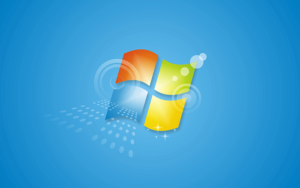
On a recent blog release, Microsoft mentions “All good things must come to an end, even Windows 7”. As of January 14th, 2020 Microsoft will no longer offer support and security updates to those running on Windows 7 – thus leaving you until then to upgrade to Windows 10 (or another operating system). If you are currently running on Windows 7 you likely have seen a few notifications as a courtesy to do an upgrade.
Having the proper security updates, patches and support on your operating system is a must when it comes to good business practices. Mitigating and reducing the chances of malicious hacking , data breaches and or virus attacks is something that every business should take seriously. While it may seem to be a bit of a hassle or a nuisance, going to Windows 10 or other operating system is a definite to protect your business.
Consider the options:
- Upgrade PCs and laptops running Windows 7 to Windows 10. This assumes the PC or laptop is capable of supporting Windows 10 which may NOT be the case. It also assumes the PC or laptop has sufficient resources to properly run the more advanced Windows 10 which also may not be the case.
- In the event that the Windows 10 is not supported on the PC or laptop, or the device does not have sufficient resources, it is recommended to replace PC’s or laptops in question.
Working with a credible IT Company makes the transition easy:
If your company has an internal IT it could be already something on the docket for upcoming upgrades. Or it could already be complete. Should your company outsource IT, then likely they have already begun transition – or at the very least, informed you that you need to upgrade soon.
Upgrading from Windows 7 to 10 on Your Own:
If you choose to not work with an IT provider, internally or externally, you always have the option to upgrade on your own. While this can remain relatively simple for the small or entrepreneurial businesses, we highly recommend having a professional help you with the transition.
Here’s the minimum specification for Windows 10:
- Processor: 1 gigahertz (GHz) or faster processor or SoC.
- RAM: 1 gigabyte (GB) for 32-bit or 2 GB for 64-bit.
- Hard disk space: 16 GB for 32-bit OS 20 GB for 64-bit OS.
- Graphics card: DirectX 9 or later with WDDM 1.0 driver.
- Display: 800 x 600 resolution
No matter how you slice it, Windows 7 is coming to an end and it makes it absolutely necessary to upgrade. Reach out to us here at Com Pro and we would be happy to connect you with our partner IT company Syncronet Managed Services.

